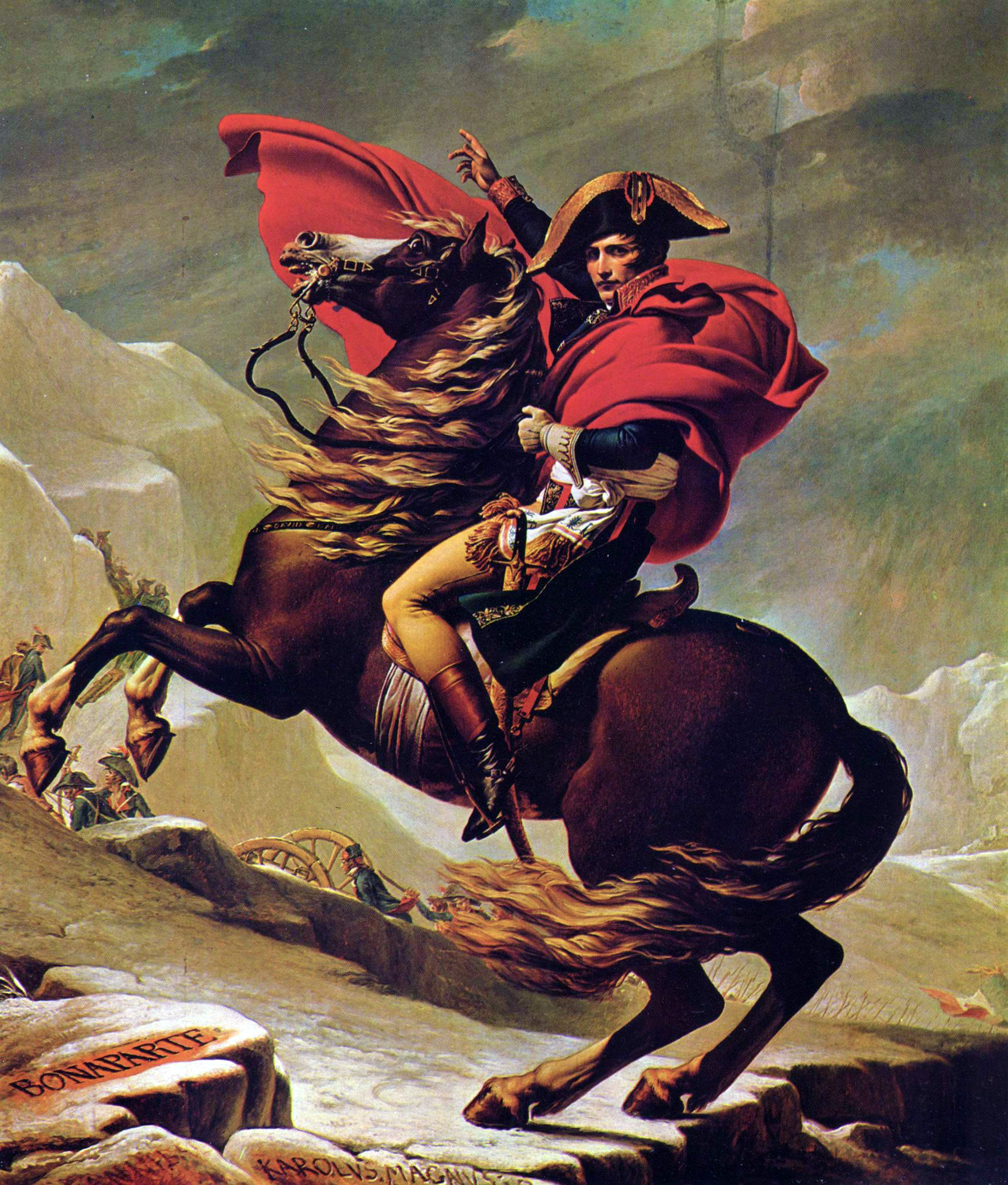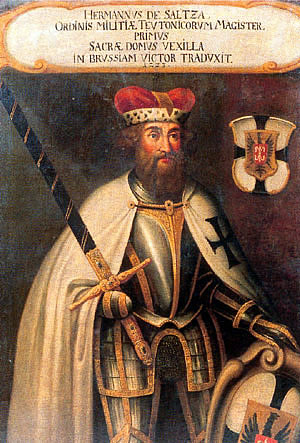|
Battle Of Dego (1796)
The Second Battle of Dego was fought on 14 and 15 April 1796 during the French Revolutionary Wars between French forces and Austro-Sardinian forces. The battle was fought near Dego, a hamlet in northwestern Italy, and ended in a French victory. Background After successfully defeating the Austrian right wing at the Battle of Montenotte, Napoleon Bonaparte continued with his plan to separate the Austrian army of General Johann Beaulieu from the army of the Kingdom of Piedmont-Sardinia led by General Michelangelo Colli. By taking the defences at Dego, the French would control the only road by which the two armies could link with each other. The town's defences comprised both a castle on a bluff and earthworks on rising ground, and were held by a small mixed force, consisting of units of both the Austrian and Piedmont-Sardinian armies. Forces Army of Italy: Napoleon Bonaparte (15,000) * Attached to army command: ** Cavalry Division: Henri Stengel *** Regiments: 5th Drag ... [...More Info...] [...Related Items...] OR: [Wikipedia] [Google] [Baidu] |
Italian Campaigns Of The French Revolutionary Wars
The Italian campaigns of the French Revolutionary Wars (1792–1802) were a series of conflicts fought principally in Northern Italy between the French Revolutionary Army and a Coalition of Austria, Russia, Piedmont-Sardinia, and a number of other Italian states. The campaign of 1796-1797 brought prominence to Napoleon Bonaparte, a young, largely unknown commander, who led French forces to victory over numerically superior Austrian and Sardinian Armies. First Coalition (1792–1797) The War of the First Coalition broke out in autumn 1792, when several European powers formed an alliance against Republican France. The first major operation was the annexation of the County of Nice and the Duchy of Savoy (both states of the Kingdom of Piedmont-Sardinia) by 30,000 French troops. This was reversed in mid-1793, when the Republican forces were withdrawn to deal with a revolt in Lyon, triggering a counter-invasion of Savoy by the Kingdom of Piedmont-Sardinia (a member of the First ... [...More Info...] [...Related Items...] OR: [Wikipedia] [Google] [Baidu] |
Army Of Italy (France)
The Army of Italy (french: Armée d'Italie) was a field army of the French Army stationed on the Italian border and used for operations in Italy itself. Though it existed in some form in the 16th century through to the present, it is best known for its role during the French Revolutionary Wars (in which it was one of the early commands of Napoleon Bonaparte, during his Italian campaign) and Napoleonic Wars. History Bonaparte's reforms Poorly supplied (uniforms and shoes were rare), and only getting reinforcements irregularly, the Army of Italy was sometimes reduced to looting to survive. When Bonaparte arrived (he took up command on 27 March 1796), indiscipline was rife. Chouan songs were sung by the troops, and a company of the Dauphin was formed. All the while improving the supply system as much as possible, Bonaparte also reestablished discipline. He condemned officers who had cried ''Vive le roi !'', (English: "Live the king!"), dismissed the 13th regiment of hussa ... [...More Info...] [...Related Items...] OR: [Wikipedia] [Google] [Baidu] |
Jean-Baptiste Meynier
Jean-Baptiste Meynier, born 22 April 1749 – died 3 December 1813, was a French soldier who served during the American Revolutionary War, the French Revolutionary Wars, and the Napoleonic Wars. Between 1792 and 1793, he rose from a captain to a general of division. During the Montenotte Campaign in 1796, he commanded a division under Napoleon Bonaparte, who had a low opinion of his military talent. In 1803 he was appointed to command the fortress of Mainz. He died there in 1813. Career Meynier enlisted in the French royal army in 1765 and later fought in the American Revolutionary War. He returned to France in 1785 and was promoted to sous-lieutenant in 1788, lieutenant in 1791, and captain in 1792. While serving in the army of Adam Philippe, Comte de Custine on the Rhine River, Meynier was ordered to defend Königstein Fortress with a few soldiers. On 5 January 1793 the French suffered a local defeat at the hands of the Prussians. When the Prussians summoned Meynier to su ... [...More Info...] [...Related Items...] OR: [Wikipedia] [Google] [Baidu] |
Division (military)
A division is a large military unit or Formation (military), formation, usually consisting of between 6,000 and 25,000 soldiers. In most armies, a division is composed of several regiments or brigades; in turn, several divisions typically make up a corps. Historically, the division has been the default combined arms unit capable of independent Military tactics, operations. Smaller combined arms units, such as the American regimental combat team (RCT) during World War II, were used when conditions favored them. In recent times, modern Western militaries have begun adopting the smaller brigade combat team (similar to the RCT) as the default combined arms unit, with the division they belong to being less important. While the focus of this article is on army divisions, in naval usage "division (naval), division" has a completely different meaning, referring to either an administrative/functional sub-unit of a department (e.g., fire control division of the weapons department) aboar ... [...More Info...] [...Related Items...] OR: [Wikipedia] [Google] [Baidu] |
Archduke Anton Victor Of Austria
Anton Victor, Viceroy of Lombardy–Venetia (full German name: Anton Viktor Joseph Johann Raimund von Österreich; 31 August 1779 – 2 April 1835) was an Archduke of Austria and a Grand Master of the Teutonic Knights. He was also briefly the last Archbishop and Elector of Cologne and Prince-Bishop of Münster before those territories were secularised in 1803. Life Anton Victor was the son of Leopold II, Holy Roman Emperor, and Maria Luisa of Spain. He was born in Florence and died in Vienna. He never married and died without issue. After the death of his uncle, Maximilian Franz, Archbishop and Prince-Elector of Cologne and Prince-Bishop of Münster, Anton Victor was chosen on 9 September 1801 as Prince-Bishop of Münster and on 7 October as Archbishop and Prince Elector of Cologne. The Electorate’s Rhenish territories had been occupied by the French in 1794 and had in 1800 become part of France (in Cologne’s case as sub-prefecture of the new ''département de la Roër'', b ... [...More Info...] [...Related Items...] OR: [Wikipedia] [Google] [Baidu] |
Grand Masters Of The Teutonic Knights
The Grand Master of the Teutonic Order (german: Hochmeister des Deutschen Ordens; la, Magister generalis Ordo Teutonicus) is the supreme head of the Teutonic Order. It is equivalent to the Grand master (order), grand master of other Military order (religious society), military orders and the superior general in non-military Religious order (Catholic), Roman Catholic religious orders. ''Hochmeister'', literally "high master", is only used in reference to the Teutonic Order, as ''Großmeister'' ("grand master") is used in German to refer to the leaders of other orders of knighthood. An early version of the full title in Latin was ''Magister Hospitalis Sanctae Mariae Alemanni, Alemannorum Hierosolymitani''. Since 1216, the full title ''Magister Hospitalis Domus Sanctae Mariae Teutons, Teutonicorum Hierosolymitani'' ("Master of the Hospital House of the Blessed Virgin Mary of the Germans of Jerusalem") was used. The offices of ''Hochmeister'' and ''Deutschmeister'' (''Magister Ge ... [...More Info...] [...Related Items...] OR: [Wikipedia] [Google] [Baidu] |
Barthélemy Catherine Joubert
Barthélemy Catherine Joubert (, 14 April 1769 – 15 August 1799) was a French general who served during the French Revolutionary Wars. Napoleon Bonaparte recognized his talents and gave him increased responsibilities. Joubert was killed while commanding the French army at the Battle of Novi in 1799. Early life and career The son of an advocate, Joubert was born at Pont-de-Vaux (Ain), and ran away from school in 1784 to enlist in the artillery. He was brought back and sent to study law at Lyon and Dijon. In 1791, during the French Revolutionary Wars, he joined the French Revolutionary Army regiment of the Ain, and was elected by his comrades successively corporal and sergeant. In January 1792 he became ''sous-lieutenant'', and in November lieutenant, having in the meantime experienced his first campaign with the army of Italy. In 1793, Joubert distinguished himself by the defence of a redoubt at the Col de Tende in north-west Italy, with only thirty men against a battalion of ... [...More Info...] [...Related Items...] OR: [Wikipedia] [Google] [Baidu] |
Elzéar Auguste Cousin De Dommartin
Elzéar Auguste Cousin de Dommartin (26 May 1768 in Dommartin-le-Franc – 9 August 1799 in Rosetta) became a French general during the French Revolutionary Wars, fought in Italy under Napoleon Bonaparte, and commanded the artillery division of the Armée d'Orient during the French invasion of Egypt in 1798. Life Dommartin received his first commission in 1785, serving as a captain of the artillery. Seriously wounded during the siege of Avignon, he was unable to take up his appointment as artillery commander at the Siege of Toulon in 1793. Therefore, an ambitious young artillery captain named Napoleon Bonaparte assumed command of the French artillery, with notable success. Dommartin then served in the Army of Italy. During the Montenotte Campaign, he led a brigade in the Second Battle of Dego and in the Battle of Mondovì. Later, he commanded the artillery at the Battle of Rovereto.Boycott-Brown, p 425 Dommartin was appointed commander of the artillery of the Rhine in 1797. ... [...More Info...] [...Related Items...] OR: [Wikipedia] [Google] [Baidu] |
Jean-Baptiste Cervoni
Jean-Baptiste Cervoni Soveria (29 August 1765 – Eckmühl 22 April 1809) became a general officer in the French First Republic, French army during the French Revolutionary Wars and was killed in action in 1809 during the Napoleonic Wars. Revolution Born a Corsican in 1765, Cervoni enlisted in the French army as a private in the Royal Corsican Regiment in 1783. His father forced him to quit the military in 1786 to study law. In 1792 Cervoni rejoined the army as a second lieutenant, sous-lieutenant in a cavalry unit. He served as aide to General Raphael Casabianca. He distinguished himself at the Siege of Toulon in 1793. During the siege he was wounded twice and promoted to ''major, chef de battalion'' and later ''colonel, chef de brigade''. At this time he may have been associated with Representative of the People Antoine Christophe Saliceti, a fellow Corsican. He was also a friend of the House of Bonaparte, Bonaparte family. Promoted to general of brigade on 14 January 1794, he w ... [...More Info...] [...Related Items...] OR: [Wikipedia] [Google] [Baidu] |

